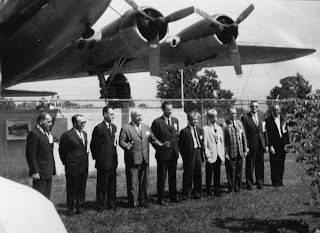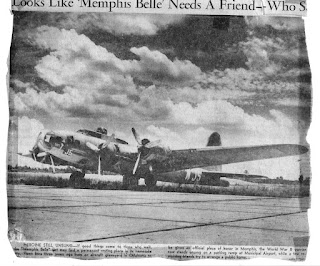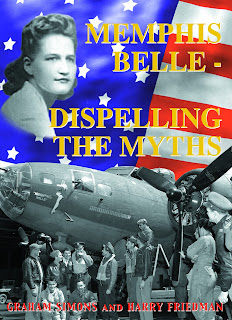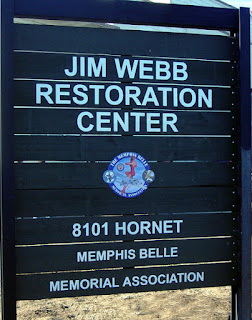It is clear that even by 1950, there was both a 'blame game' and a lot of 'buck-passing' going on. When it suited people, the aircraft was flavor-of-the-month - the rest of the time it was virtually abandoned to the attention of the vandals.
Those newspaper articles stirred a few citizens into action. A new committee was formed. One proposal was to find a spot in Overton Park and build a glass enclosure. No decision was made. A cheaper the proposal was to give the aircraft a clear plastic coat to protect it against the weather.
A Commercial Appeal editorial suggested that the city should find a place and build a shelter, but there seemed to be a strong dose of NIMBYism - as in 'Not In My Back Yard'. The best the city could do was an offer, from the Park Commission, of a site just north of the Pink Palace Museum in Chickasaw Gardens.' Some residents of the area didn't like that. It would draw too many visitors to their quiet residential area, not to speak of it being an eyesore. In December, the plans had changed again - the Park Commission next offered a site on a terrace in Bellevue Park. By this time, the plane had been moved out of the hangar and now stood on an open ramp at the airport. The Air Force was not interested in it, and could no longer keep it under cover - they needed the hangar space.
An artists impression drawn up by architect West Livaudais of the display plinth proposed for the Armoury grounds.
It was 1949, and now time for the American Legion to get into the act. Newspapers called the Memphis Belle a stepchild. Marion Hale, senior vice president of the Memphis American Legion, Post No. 1, announced that the Board of Directors of his post had voted unanimously to adopt the Memphis Belle as a Legion project. It proposed to place the Belle on the grounds of the National Guard Armory, facing Central Avenue. The Legion named Roane Waring Jr. to head a committee of six to get some action, and for once, they got it. The Legion plan called for an outdoor museum to contain a display of military mementoes with the Memphis Belle as the centrepiece. It didn't get that far, but they did move the aircraft.
A picture published in the Commercial Appeal on May 21st, 1950, showed the Memphis Belle being dismantled. Her wings were off. Then, on May 23rd, it was towed to the Armory site and hoisted onto a concrete pedestal. The wings were put back on, and the paint was refurbished. The Legion project was complete.
The aircraft was moved out to a concrete plinth on the corner of Hollywood Street and Central Avenue.
The idea was that by placing the aircraft on a pedestal it would deter souvenir hunters and vandals.
[via Harry Friedman]
Or was it? For now, the vandals took over. Somebody said if they weren't stopped, the vandals would make off with the entire plane, a piece at a time just like that old Johnny Cash song! So by October 19th, 1951, a chain link fence was erected around the site. The wire slowed the vandals, and put a partial stop to lovers making use of the rear fuselage for asignations, but if the vandals were determined enough, they could climb over even that kind of barrier.
Every now and then, someone would try and stir up some action. In June 1952 ex US Navy man Granville Doyle Jr. of Doyle Distributing Co. stirred things up yet again; 'I feel that the present appearance and state of the Memphis Belle on Central is a disgrace and should bring a feeling of shame to anyone who has a love for aviation whenever they should happen to pass this deplorable sight. If this airplane can't be kept in a better appearance, aviation as a whole would profit by its removal. Having served in the Naval Air Corps for seven years, I feel that if this was a Navy aircraft they would never allow it to appear in public in its present state.
With the various Army units in and around Memphis, doesn't anyone possess enough pride to take care of its 'own'? If not, I feel that there are enough former military pilots in this area who would be willing to subscribe to a service to keep the memorial in a state of good repair.
It was not only vandalism - as the years passed, the weather was taking its toll, too. Aluminum does not rust as steel does. But, when exposed long enough, especially with certain chemical elements in the air,
aluminum does corrode. Such corrosion can be treated and, to some degree, retarded but for many of the years the Memphis Belle stood there on the pedestal exposed and open to the elements, nothing was done to retard or prevent corrosion. The aircraft was to sit there for twenty-seven years.
Further attempts were made to keep out the vandals - a triple row of barbed wire was placed at an angle outward on top of the existing wire fence, but all that had the effect of was to make it look more like a prison camp. What really was needed was an indoor home, but none seemed to be forthcoming - in fact it seemed even further away than ever.
When the crew of the Memphis Belle came to Memphis for a reunion in 1961 someone decided to spruce up the aircraft with a splash of paint. The crew however, were none-too-impressed by the fact that when the aircraft had been painted, a different nose-art to the original 'Petty Girl' had been applied, and that none of their names were by their respective crew places any more.
Margaret, Bob Morgan and the Belle.
There were people in the city that cared for the aircraft. Still, they lacked the money, support and wherewithall to do anything but conduct a holding exercise against the onslaught of vandalism, be it official 'stripping of useful parts' by the Air Force or constant stripping my the souvenir hunters.
April 1962 saw the first real 'commercialization' of the aircraft, its famous name, Petty Girl 'logo' and legends when Revell Inc, the model kit manufacturer began marketing one-seventy-second scale plastic kits of the aircraft. The model-maker stated that they believed that within a year half a million Americans would have one of the plastic kits in their homes.
Every local newspaperman, editor and photographer loved the link the Memphis Belle with Memphis belles. In the same year as the 91st BG reunion this photograph appeared with the MSY entries for the upcoming Miss Memphis Pageant - left to right they are Suzanne Troth, Linda Warren, Susan Carey, Suzie Buchwald, Nonnie Hooker, Donna Owen and Beverley Hill.
[via Harry Friedman]
In October 1966 13 year old David Pitts of Pleasant Grove AL wrote to a number of people including Memphis Mayor William B Ingram, Paul Burke - who played Colonel Joseph Anson Gallagher in the ABC TV series 'Twelve O'Clock High' - and the Commercial Appeal newspaper amongst others about what he saw as the poor condition of the aircraft. A few days later 7-year old Tommy Knapp wrote in expressing similar views; 'I am making a model of the Memphis Belle. I wish the Memphis Belle could be fixed up so everyone would enjoy seeing it. I sure would like to get inside that plane. I'd like to help fix it up. I'd help paint it and maybe I could get some new tires for it at the gas station, but I only have 50 cents, so I guess I'll have to save some first'.
‘Bill’ Winchell and 401st BS clerk Doug Gibson show David Pitts some of the combat photographs at the 1967 91st BG reunion in which David was made an honorary member of the 91st BG Association. [via Harry Friedman]
Another letter came from Norman Alexander; 'I read about the boy from Alabama wanting to repair the Memphis Belle, and he is right. She would be better off a heap of junk than in the condition she's in now. She helped us win the war, and now her paint is peeling, her winders [sic] are covered and breaking, her guns are gone and she's not as pretty as she was years ago. I think there should be some fund or something Think of the men that flew in her. If they have kids they might not even want to show her to them. Those people came to Memphis to see her and imagine their surprise. On the instructions, she is said to be resting peacefully on an honorary war display. I am 12 years old and I go to Trezevant High School and if you plan to fix her I'll be more than glad and honored to help. So come on and fix her right... please. She is an eyesore now and would be more historic the way she actually was'
Although the letters never got a reply from the Mayor's office or the TV star, they did shame the city into action with a new coat of paint and repairs being done by the Tennessee Air National Guard led by Chief Master Sgt Walter W. Maingault. The nose glazing was discovered to be badly damaged, and after searching all over the country and failing to find a replacement, the Air National Guard applied an epoxy coating to the perspex and painted it silver. At the same time they fitted dummy' guns'.
By early December it was possible to arrange a re-dedication. Bob Morgan flew down to Birmingham AL and picked up David Pitts and his father William so they could be present at the ceremony where they were presented with the keys to the city.
In July 1967 the 91st Bomb Group held their first formal reunion in Memphis. Several pilgrimages were made to the Armoury Grounds, and William Wyler's movie was shown a number of times. Bob Morgan and the bond tour crew showed up, as did Joe Giambrone. Of course, much hangar flying was done in the Peabody Hotel, including Joe Giambrone telling of the only time he flew on the Memphis Belle. Here I was, on the ground crew, so I asked the Captain if he'd let me go on one of the milk runs. We hit Méaulte and I remember it almost shook the props off. Listening to the conversation was General Stanley Wray: Méaulte? Hell, I led that raid - that was no milk run!'.
Newspaper photographers and now the TV men would come out now and then. The crew would line up in front of the plane. There would be a few shots on the evening news. Newspaper writers would crank up a new feature story, recalling and reminding citizens of the old girl's past glories.
In May 1969, while filming 'The Liberation of Lord Byron Jones' in Humboldt, TN, William Wyler and some of his film crew stopped by the old aircraft for a photo opportunity and to meet up with Bob Morgan one more time. Representatives from Mayor Henry Loeb and Governor Buford Ellington were on hand, as were the TV and Press. Unfortunately, things did not go as smoothly as planned, for no one could find the key-holder to let them all into the gated compound!
Perhaps no one can say for certain how long the Belle might have stood there on her pedestal, waiting. But in 1976, the National Guard forced a new round of activity. The Armory grounds were sold to the nearby Memphis Memorial Stadium. The old plane would have to be moved. Numerous plans were put forward again - Memphis Light, Gas and Water Division offered a small site on North Main near the Cook Convention Center with a small building adjacent that could be used as a museum. There was talk of transferring it to a location inside the Libertyland Amusement Park on Early Maxwell Blvd. Nothing was really suitable. It was time to step forward the Memphis Belle Memorial Association.



































